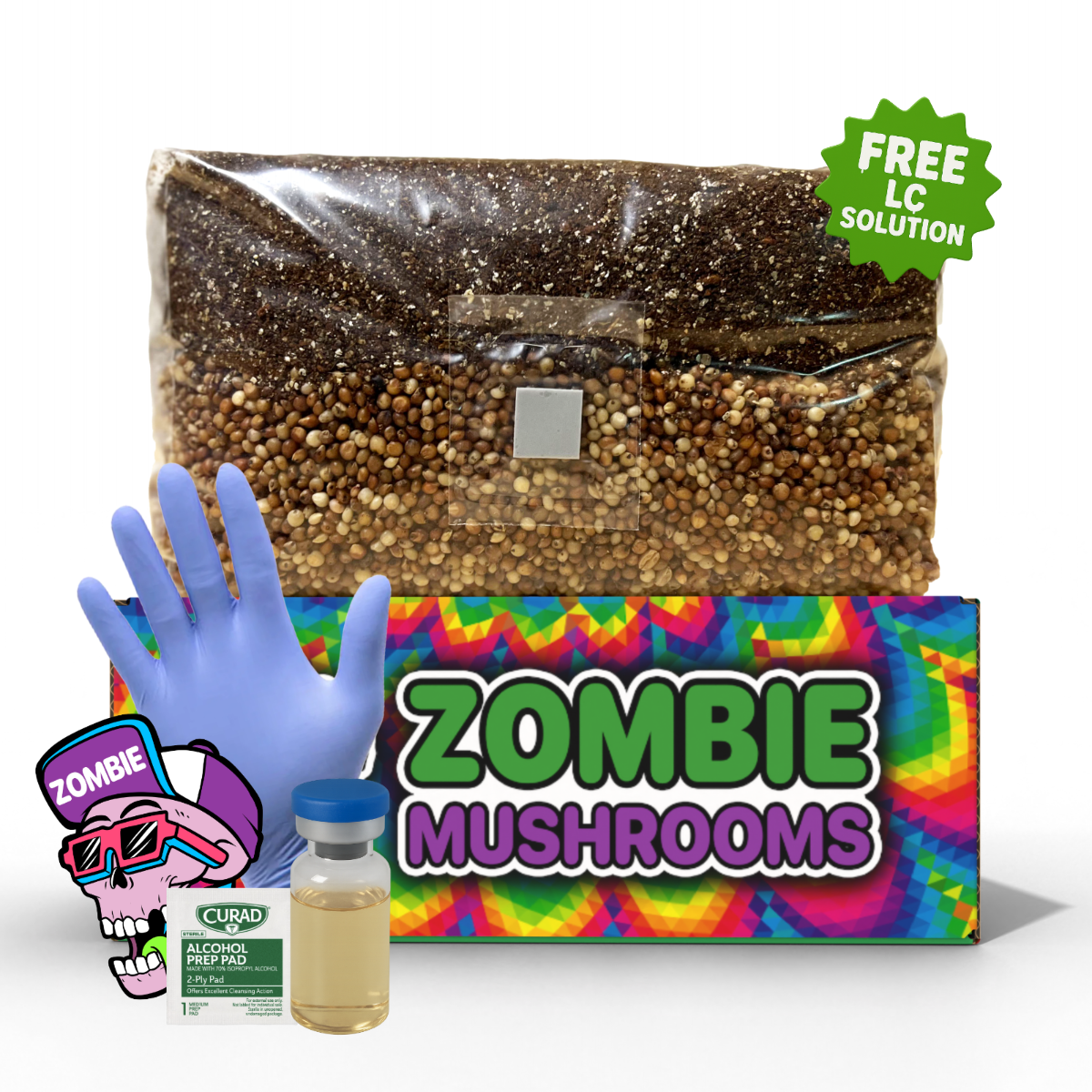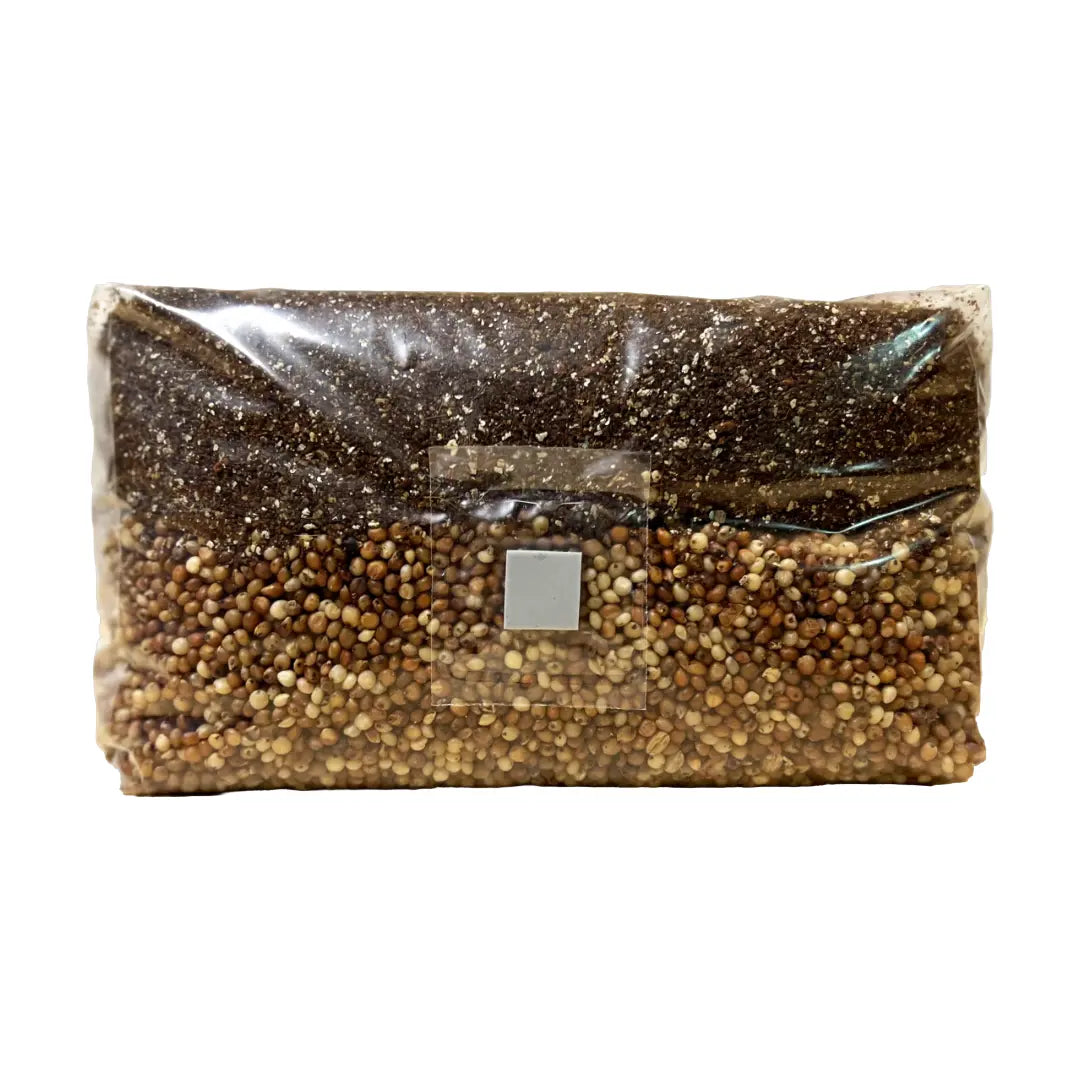⬇️ Prefer to listen instead? ⬇️

- Dried lion’s mane may provide up to 15% more antioxidant activity than fresh (Zhang et al., 2019).
- Key compounds like hericenones and erinacines retain over 80% potency when Lion’s Mane is properly dried (Wang et al., 2021).
- Beta-glucans remain stable during drying, preserving immune-boosting effects (Friedman, 2016).
- Fresh lion’s mane has a unique seafood-like flavor and meaty texture ideal for gourmet cooking.
- Dried lion’s mane lasts up to 12 months, making it the better option for long-term storage.
Lion’s Mane mushrooms are great. They can help your brain, boost your immune system, and even make your food taste better. When you pick between fresh or dried Lion’s Mane, think about things like flavor, how long it lasts, and what you want to use it for. This guide compares the two. It can help you choose the best one for you. With our beginner-friendly grow kits, you can enjoy harvesting fresh Lion’s Mane mushrooms at home and experience their full flavor and benefits firsthand.

What Is Lion's Mane?
Lion’s Mane mushroom (Hericium erinaceus) is a white, shaggy, and often globe-like mushroom that looks like hanging icicles. This mushroom grows in Asia, Europe, and North America. People cook with it, and it's also seen as a healthy food used for a long time in Traditional Chinese Medicine (TCM). More recently, people in the West have noticed Lion’s Mane for its ability to help the brain. It can support memory, focus, nerve repair, and clear thinking.
Lion’s Mane mushrooms are available in several forms
- Fresh Lion’s Mane: Chefs like it for its texture like lobster and mild taste.
- Dried Lion’s Mane: It lasts longer on the shelf and has more of the active healthy compounds.
- Powdered Lion’s Mane: Often used in teas, blends, and supplements.
- Capsules and Tinctures: For measured amounts and easy daily use.
But among these, the most common question we hear is: fresh or dried Lion’s Mane—which is better? We will look at that now.

Fresh vs Dried Lion’s Mane: Nutritional Breakdown
While both fresh and dried Lion’s Mane come from the same fungus, the drying process changes how many nutrients they have.
Fresh Lion’s Mane
Up to 90% of fresh lion's mane is water. It helps hydrate you and has few calories. It has a soft, stringy texture that makes it nice to cook in savory dishes. Fresh mushrooms provide important nutrients like potassium, protein, small amounts of calcium, and other antioxidants.
Dried Lion’s Mane
When the water is taken out, the nutrients are packed closer together by weight. Dried lion’s mane often contains
- More polysaccharides per gram, especially beta-glucans which help the immune system.
- A higher amount of antioxidants, enzymes, and brain-helping compounds like hericenones and erinacines (Wang et al., 2021).
Some of the smell and taste compounds can be lost during drying—up to 60% might be gone (Li et al., 2020). But most of the healthy compounds stay strong. One study even found dried Lion’s Mane had 15% stronger antioxidant activity than fresh (Zhang et al., 2019).
A Look at the Science
- Hericenones (from the mushroom cap) and erinacines (from the root system) help grow nerve growth factor (NGF), which is key for brain function.
- Beta-glucans wake up macrophages and natural killer cells, making your immune system stronger (Friedman, 2016).

Flavor and Culinary Use
Fresh and dried Lion’s Mane taste different and work best for different kinds of cooking. Both have good points for the kitchen.
Fresh Lion’s Mane: Gourmet Delight
Fresh lion's mane is very well-liked by people who cook fancy meals. It feels like seafood—like crab or lobster. It is great for searing, cooking in a pan, and grilling. It soaks up flavors well and keeps its meaty feel.
Ways people cook fresh
- Cooked in a pan like steaks with garlic butter
- Used to make "crab cakes" after shredding
- Cooked quickly with soy sauce and sesame oil
- Grilled with herbs and olive oil
Fresh lion’s mane mushrooms are good to use instead of meat or seafood in dishes without meat or fish. This is because they have protein and a good savory taste.
Dried Lion’s Mane: Versatile and Savory
When you add water back to dried Lion’s Mane mushrooms, they become a bit chewy and keep an earthy, deeper taste. They hold their shape well in dishes that cook for a long time, such as
- Healthy mushroom teas or drinks
- Ramen or pho with mushrooms cooked in broth
- Mushroom stews and soups with wild rice
- Used to make vegetable broth taste better
Putting water back into dried Lion’s Mane is easy: soak the pieces in warm water for 20–30 minutes. Here's a tip: use the water you soaked them in as broth. Flavor and nutrients go into the water.
| Feature | Fresh Lion’s Mane | Dried Lion’s Mane |
|---|---|---|
| Flavor | Mild, like seafood | Stronger, earthy, savory |
| Texture | Soft, meaty | Firmer after adding water |
| Use Cases | Grilled, pan-cooked, fake seafood | Long-cooked dishes, teas, for health |

Shelf Life and Storage
How long something lasts is important for many mushroom fans.
Fresh Lion’s Mane Storage
- Stays good in the fridge for: 5–10 days
- Needs to be stored so air can get to it (like in a paper bag) to stop water from building up
- Should be used a few days after you buy it or pick it
- Gets moldy or rotten easily
Dried Lion’s Mane Storage
- Stays good for: 9–12 months (some stay strong for over a year)
- Best way to store: in a jar with a tight lid in a dark, cool place
- Good if you buy a lot or don't use it often
- Great for trips or having on hand for later
If you want something that doesn't need much care, dried Lion’s Mane is much better.

Convenience & Cost Considerations
Dried mushrooms are usually easier to deal with and cost less than fresh ones.
Dried Lion’s Mane
- Costs less per gram because there is less water
- Sold in bigger amounts, which saves money when you buy a lot
- Can be used in many ways (teas, extracts, supplements)
- Easy to store and send without needing a fridge
Fresh Lion’s Mane
- Costs more per pound because it goes bad quickly and has a lot of water
- You have to buy it often unless you grow it at home
- Better for people who cook meals often
For anyone who cares about what's easy and costs less, dried lion’s mane gives you more choices for your money and your time.

How to Use Dried Lion's Mane
Dried lion’s mane is not just a backup for fresh. It works well and you can use it in many ways.
In the Kitchen
- Add Water and Cook: Put water back in, then cook in a pan, stir-fry, or simmer in soup.
- Shred and Cook in Pan: Make something like plant-based pulled pork or shredded crab.
- Flavor Food: Add to rice while it cooks for an earthy taste.
In Supplements and Beverages
- Powder: Easy to add to smoothies, protein drinks, or lattes.
- Herbal teas or cooked drinks: Simmer with ginger and cinnamon to help your immune system.
- Liquid drops and extracts: Often made from dried lions’ mane to get a set amount.
Dried lion’s mane is often used in pills and strong liquid extracts because it stays the same for a long time and is consistent.

Which Is Better for Health: Fresh or Dried?
Deciding between fresh and dried depends on if you want the strongest effect or if you just like one more than the other.
Dried Lion’s Mane Benefits
- Up to 15% higher antioxidant power after air-drying (Zhang et al., 2019)
- Keeps over 80% of compounds that protect nerves like erinacines and hericenones (Wang et al., 2021)
- More beta-glucans in each gram (Friedman, 2016)
Fresh Lion’s Mane Benefits
- Easier to put into daily meals
- Easier on your stomach when you eat the whole mushroom
- Keeps its smell and feel best for cooking
If you want the most health benefits, dried lion's mane might give you more. But fresh is also good for you, especially when you eat it often as part of your meals.

Fresh vs Dried: Best Use Cases
Here is a simple comparison if you are still deciding
When to Choose Fresh Lion’s Mane
- You like trying new recipes
- You cook at home often or love food
- You are growing your own mushrooms
- You care about how food tastes and feels
When to Choose Dried Lion’s Mane
- You want help for your brain or immune system
- You take supplements or herbal drinks
- You want something that lasts a long time
- You want to buy a lot and spend less

Grow Your Own: Want Fresh Lion’s Mane Anytime?
If you like fresh Lion’s Mane but can't find it close by or don't want to go to the store often, try growing it at home. Kits like the Zombie Mushrooms Lion’s Mane Grow Kit have everything you need
- A block for the mushrooms to grow on, full of food
- Mushroom starter that is ready to use
- Simple directions
With the right moisture and light that is not too bright, you can pick fresh Lion’s Mane mushrooms in 2–3 weeks. Growing your own mushrooms also saves money over time and gives you the freshest ones possible.

Mix & Match: Combine Both in Your Routine
You don't have to choose just one
Many people use both fresh and dried lion’s mane
- Cook fresh lion’s mane for tasty dinners.
- Make tea from dried slices or use powder in the morning to help your brain.
- Play around with making your own liquid extracts using dried mushroom pieces.
Zombie Mushrooms also sells grow kits and dried lion’s mane together. This lets you have what's easy to use along with the chance to cook different things.
Final Verdict: Which Should You Choose?
The right choice depends on what you want and like. Here is the simple answer
- For Food Lovers: Fresh Lion’s Mane is best for you. It tastes good, feels good to eat, and is great for frying, grilling, and using in meals.
- For Daily Health: Dried Lion’s Mane is stronger, lasts longer, and works for many healthy uses.
- Have Both: Keep dried on hand for supplements and drinks. Grow or buy fresh when you want to cook something special.
Try both, and see what your body and your tastebuds like best.
Citations
- Li, Q., Wang, Y., Hu, X., & Chen, L. (2020). Comparison of aroma compositions in dried vs fresh edible mushrooms. Food Chemistry, 315, 126304. https://doi.org/10.1016/j.foodchem.2020.126304
- Wang, F., et al. (2021). Comparative evaluation of drying processes on medicinal compounds in Lion’s Mane mushrooms. Journal of Food Processing and Preservation, 45(1), e15120. https://doi.org/10.1111/jfpp.15120



